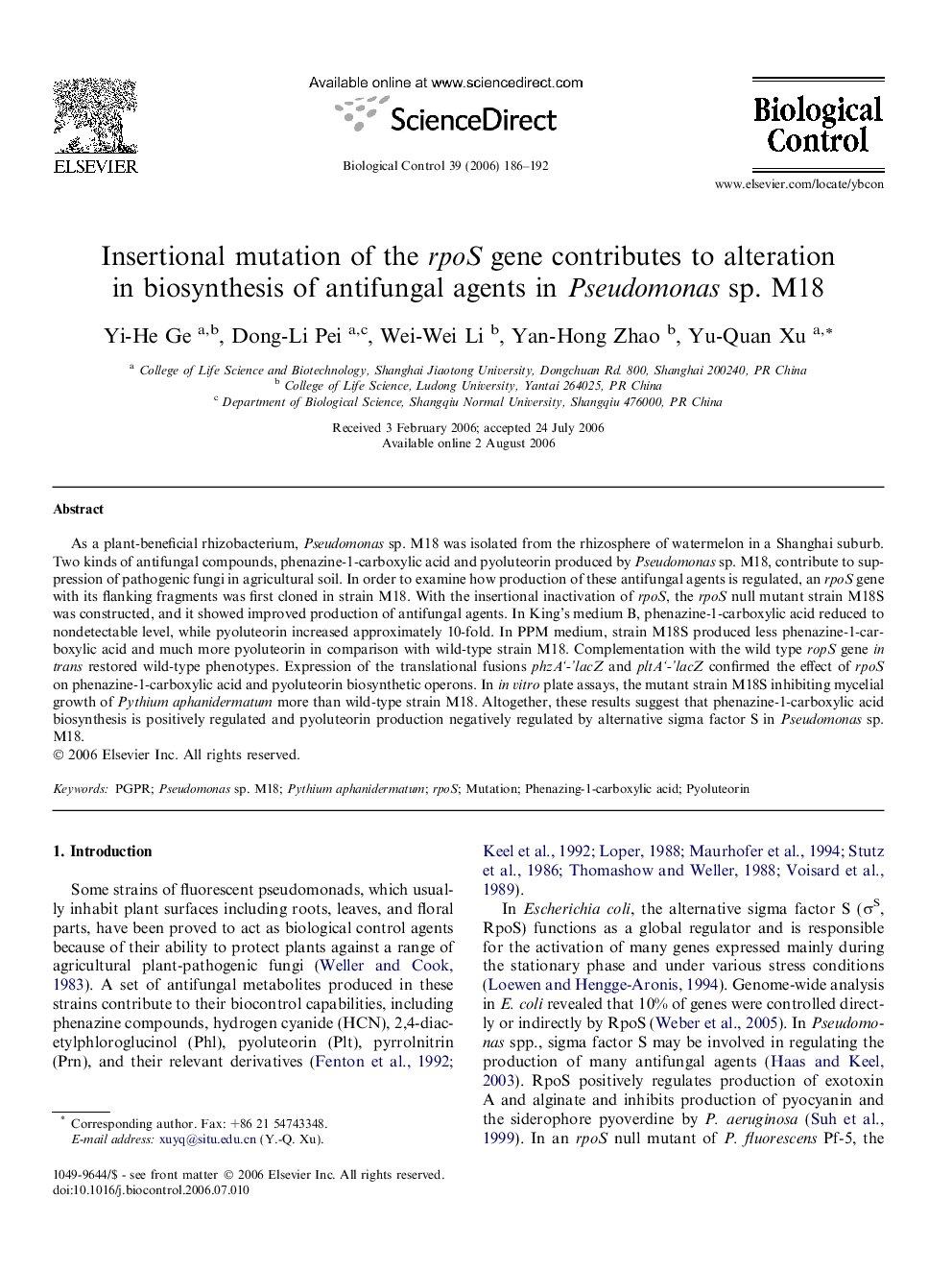| Article ID | Journal | Published Year | Pages | File Type |
|---|---|---|---|---|
| 4505256 | Biological Control | 2006 | 7 Pages |
As a plant-beneficial rhizobacterium, Pseudomonas sp. M18 was isolated from the rhizosphere of watermelon in a Shanghai suburb. Two kinds of antifungal compounds, phenazine-1-carboxylic acid and pyoluteorin produced by Pseudomonas sp. M18, contribute to suppression of pathogenic fungi in agricultural soil. In order to examine how production of these antifungal agents is regulated, an rpoS gene with its flanking fragments was first cloned in strain M18. With the insertional inactivation of rpoS, the rpoS null mutant strain M18S was constructed, and it showed improved production of antifungal agents. In King’s medium B, phenazine-1-carboxylic acid reduced to nondetectable level, while pyoluteorin increased approximately 10-fold. In PPM medium, strain M18S produced less phenazine-1-carboxylic acid and much more pyoluteorin in comparison with wild-type strain M18. Complementation with the wild type ropS gene in trans restored wild-type phenotypes. Expression of the translational fusions phzA‘-’lacZ and pltA‘-’lacZ confirmed the effect of rpoS on phenazine-1-carboxylic acid and pyoluteorin biosynthetic operons. In in vitro plate assays, the mutant strain M18S inhibiting mycelial growth of Pythium aphanidermatum more than wild-type strain M18. Altogether, these results suggest that phenazine-1-carboxylic acid biosynthesis is positively regulated and pyoluteorin production negatively regulated by alternative sigma factor S in Pseudomonas sp. M18.
